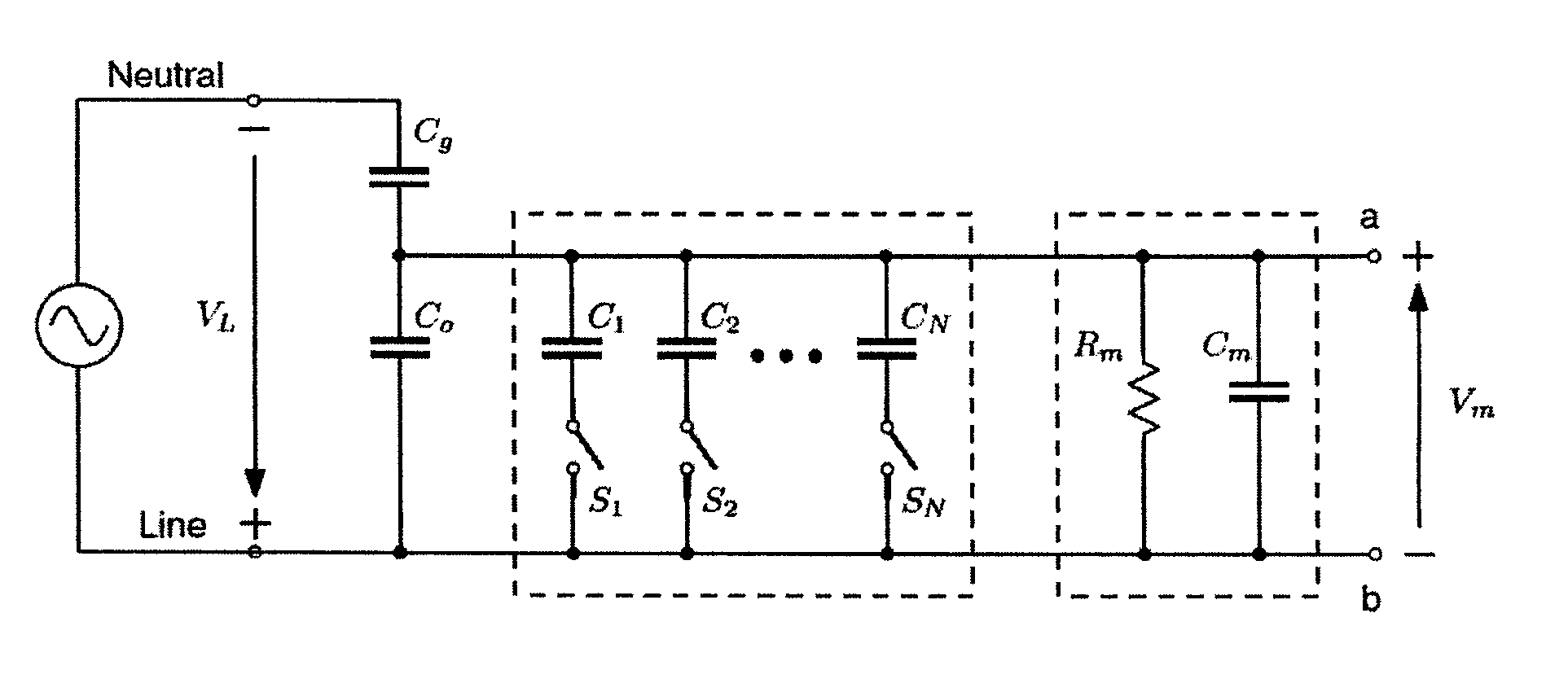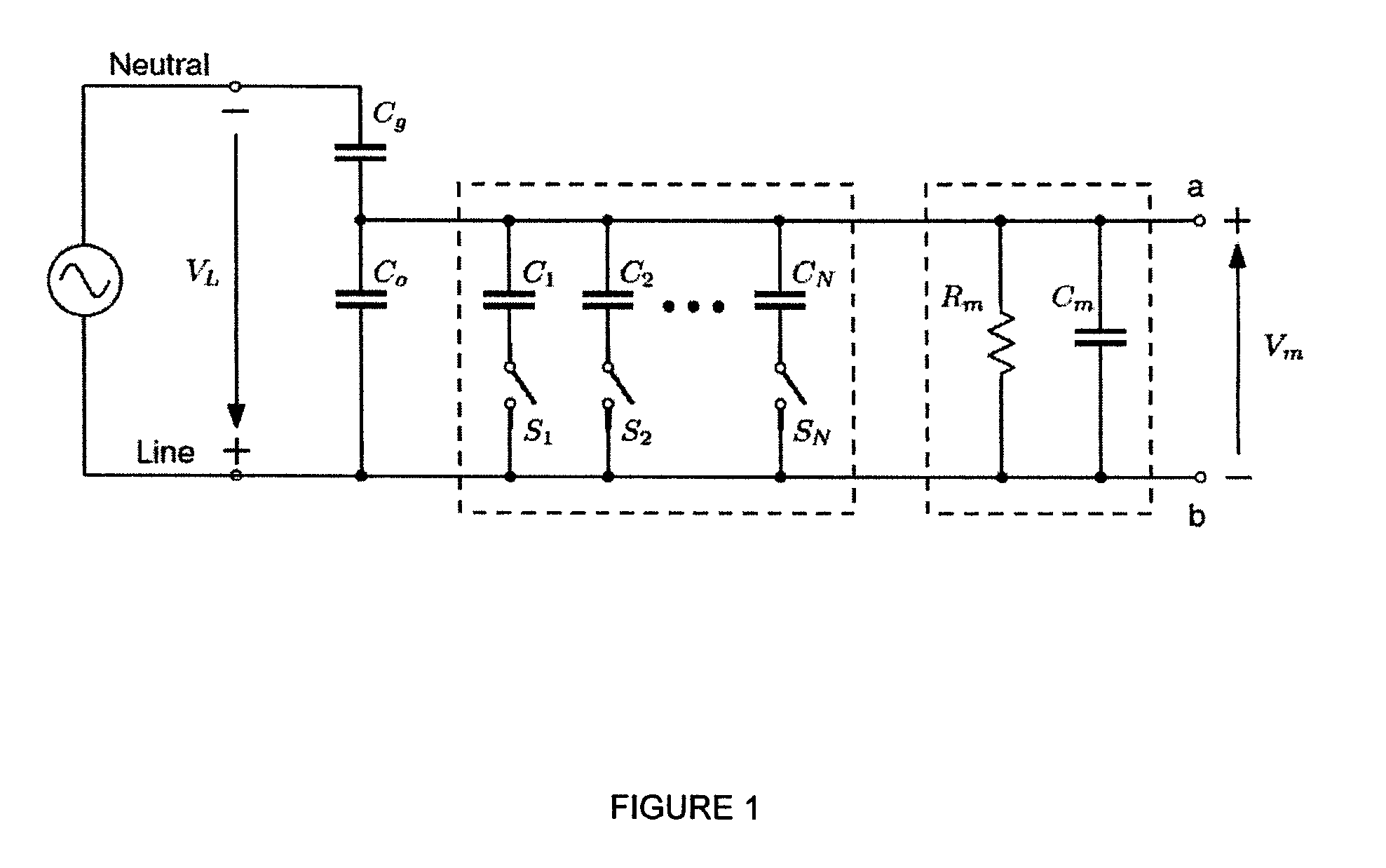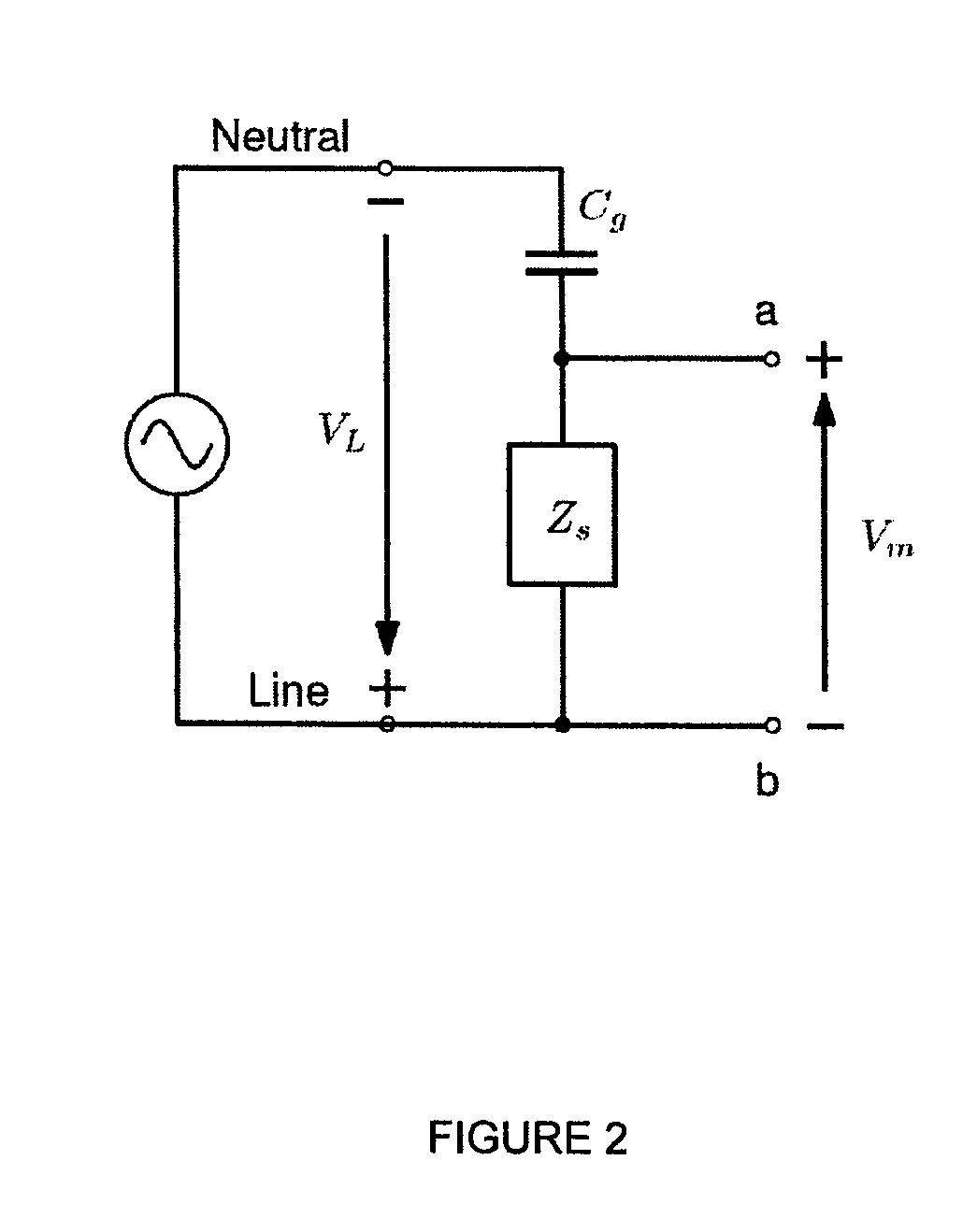Voltage sensing unit for sensing voltage of high-power lines using a single-contact point and method of use thereof
a voltage sensing unit and high-power line technology, applied in the direction of electrical testing, instruments, base element modifications, etc., can solve the problems of de-energized or “knocking out” a line, the electric grid is evolving into a highly sophisticated and complex network, and the independent monitoring of transmission or distribution lines is limited, so as to improve the safety of deploying the sensor, accurate measurement of voltage, and easy deployment
- Summary
- Abstract
- Description
- Claims
- Application Information
AI Technical Summary
Benefits of technology
Problems solved by technology
Method used
Image
Examples
example 1
Measuring Voltage
[0178]The sensor voltage is measured across the external capacitance between nodes A and B. The voltage is buffered by a high-input impedance voltage follower using an Intersil CA3140 op-amp. The op-amp uses two nine volt batteries providing supply voltages of + / −9 V where the common mode voltage is referenced to the line voltage (hot conductor). The output of the buffer is connected to an Agilent DVM model 34401A which is used to record the sensor voltage. Since the DVM loads the sensor, the measurement model preferably includes compensation for Rm and Cm, the effective input resistance and capacitance of the meter. For this example, Rm is 10 Mohm and Cm is 370 pF. The DVM has analog to digital converters (ADC's) which are floating relative to the potential of the high voltage line. The maximum differential voltage between the input of the meter and ground (neutral) is rated for 500 VAC. This limitation can be removed using an optocoupler.
[0179]Three silver mica 13...
example 2
Linearity Test
[0180]To check the linearity of the measured sensing voltages, a figure is plotted based on input voltages versus sensing voltages. This is shown graphically in FIG. 8. From this figure, it is clear that the sensing voltages, V1, V2 and V3 are linear.
example 3
Factory Calibration to Estimate the Unknown Capacitances
[0181]A numerical method is developed to solve for the unknown values (Co, Cg, and VL) by applying three parallel capacitances successively across the voltage sensor on the high-voltage line. This numerical method has been implemented in Matlab code to validate the measurement method. If the first capacitance C1 is connected across Co, then the voltage V1 from node A to node B can be calculated from the following equation: It is to be noted that the high impedance buffer removes the contribution of Cm and the input capacitance of the buffer, from hereon, is assumed to be absorbed in the value of Co.
V1=VLCgCg+C0+C.(1)
[0182]Similarly, if the second and third capacitances are connected, the corresponding voltages V2 and V3 are:
V2=VinCgCg+C0+2C(2)V3=VinCgCg+C0+3C(3)V2=VLCgCg+C0+2CV3=VLCgCg+C0+3C.V2=VLCgCg+C0+2C(2)V3=VLCgCg+C0+3C.(3)
[0183]By simplifying equation 1 to 3 the following is attained:
V1Cg−VinCg+V1Co+V1C0 (4)
V2Cg−VinCg+V2...
PUM
 Login to View More
Login to View More Abstract
Description
Claims
Application Information
 Login to View More
Login to View More - R&D
- Intellectual Property
- Life Sciences
- Materials
- Tech Scout
- Unparalleled Data Quality
- Higher Quality Content
- 60% Fewer Hallucinations
Browse by: Latest US Patents, China's latest patents, Technical Efficacy Thesaurus, Application Domain, Technology Topic, Popular Technical Reports.
© 2025 PatSnap. All rights reserved.Legal|Privacy policy|Modern Slavery Act Transparency Statement|Sitemap|About US| Contact US: help@patsnap.com



